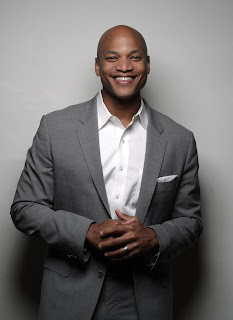 |
| Amalgamated Transit Union Baltimore |
The Baltimore branch of the transit union ATU thinks otherwise and since they are the ones who make transit run, one is inclined to listen to them as experts, even though the union lingo with Local and Amalgamated etc. my stand as a barrier between them and "the people" in general (for whom they say they speak) plus, of course, the problem with associating rapid and bus.
Join ATU Local 1300 and our allies as we unite to fight for transit justice in Baltimore. In the face of the Red Line cut and rushed BaltimoreLink proposal, Local 1300 is offering a set of new ideas – a people’s plan for Baltimore transit – that can be implemented today. We’re proposing a true bus rapid transit system connecting East and West Baltimore, building on corridors where ridership is high and the buses are slow. (ATU Facebook page)
 |
| slow boarding at the narrow front door takes often a long time (Eutaw Street, ATU image) |
The union makes an, on first glance, sensible proposal: It leaves the MTA proposed Link bus routes largely alone and suggests to speed buses up along the most traveled corridors by making them faster through a set of measures that industry experts consider the must-have items before a bus can be called rapid.
 |
| Elements of BRT to make the bus faster |
Chief among the "accelerators" are off-board ticket purchase (ideally combined with all-door bus boarding), level boarding, dedicated bus lanes and signal priority at intersections. In short, the bus would sit less long at stops (dwell time) and it would move faster between stops because it would be on its own lane instead of stuck between the other cars. At traffic signals, a bus would get a green signal earlier, keep it longer and be allowed to jump to the front of the queue if it has to turn.
 |
| ATU proposed BRT routes |
Some of the ATU proposals would certainly raise many people's concerns such as modifications or elimination of the medians of Edmondson Avenue, Broadway or Eutaw Place or a two way busway on Baltimore Street.
 |
Proposed BRT routes as shown on the map
|
ATU should know, that such changes to roadways can't be "implemented tomorrow" as they say on their website but require public participation, environmental impact studies and intense collaboration with the City. The Red Line planned to compensate the elimination of the median at Edmondson Avenue with a green track and various offsite landscape mitigation projects.
 |
Broadway, before and after (ATU)
|
The medians of Broadway have just been re-done with City investments in revitalizing Broadway. The Eutaw Place median is part of a careful historic set-up which is really "a sacred cow" in that it is a key characteristic of one of the most beautiful streets in Baltimore, located in a historic district.
To be fair, ATU doesn't propose to eliminate the medians there but simply to encroach on them at stops. The diagrammatic images ATU prepared are not inspiring much hope that even such a small thing could be approved. Some sections still show high platforms, even though the bus fleet is almost entirely low floor now with a boarding level as low as 7"-8" above pavement achievable through "kneeling buses".
 |
Baltimore Street busway: Orginally part of MTA's Link concept but
rejected by the City. (ATU graphic)
|
Only if buses can be sped up over their current crawl can the efficiencies be achieved that are needed to run a more frequent and more reliable service with essentially the same fleet and operator pool as before.
Selectively choosing some ATU suggestions, especially making the highest ridership routes some type premier service is valuable, even if one should probably not call this rapid bus (BRT). The proposed Gold Line on North Avenue should be the gold standard pilot for what CityLink can do.
Baltimore is still waiting for a visible and meaningful gesture in response to the uprising of last year. Nothing would be a better response than a reliable, frequent and faster bus service from Milton to Hilton as part of the North Avenue Rising project already underway as a result of a MTA/City grant application that is funded.
 |
ATU graphic for Edmondson Avenue
|
The prospect for bringing the union into the tent of those who support the Link reform appears to be dim, though. Political tensions have arisen on a number of other issues in which the current administration and the local chapter of the union don't see eye to eye. ATU in its bus paper calls the Link system a "charade".
Bus Rapid Transit, ironically, has been the preferred mode under Governor Ehrlich when it was studied extensively as an alternative to the Rail Line as a rail line. It just wasn't cost effective at all.
BRT has been tried in many cities as a presumably cheaper alternative to subway and light rail. In urban centers Seattle and Boston put it even underground to avoid congestion. Alas, in the US BRT is mostly known as a much watered down version of what Bogota, Curitiba and Istanbul implemented. There, in response to unimaginable pollution and congestion the bus was indeed, reformed to work nearly as well as a train but with the fraction of the cost. There are just three or so succesful BRT lines in the US, mostly single BRT lines, not networks. To do it the right way takes political will and power that no US city has shown yet.
Klaus Philipsen, FAIA
A People's Plan for Baltimore Transit , ATU
Klaus Philipsen, FAIA
A People's Plan for Baltimore Transit , ATU
 |
| Los Angeles Orange Line BRT, a single line. |
 |
| Bus speeds in Baltimore per ATU map |














































